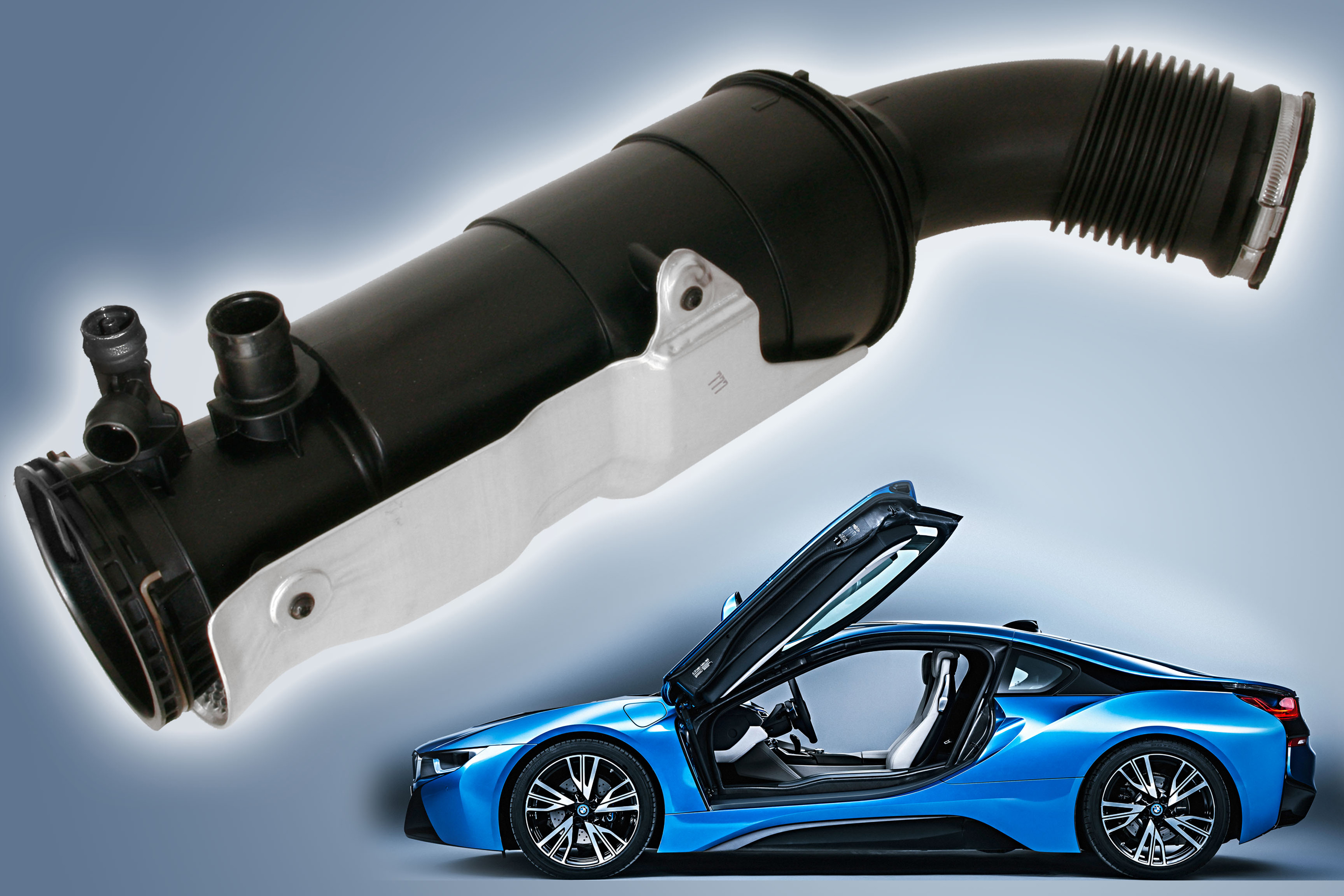
The BMW i8 plug-in hybrid sports car now features a resonator made of glass-fiber reinforced DuPont Zytel PLUS 95G35, the company says.
The resonator is reportedly is tuned to reduce the typical high-frequency air intake sound to a lower level. Installed between the air filter and turbo charger in the rear of the i8, it is part of the air management system of the car’s compact 1.5 litre three cylinder petrol engine.
Zytel PLUS is a polyamide produced with DuPont’s Shield technology which can improve long-term resistance to high temperatures and aggressive fluids typical of under-the-hood applications. Due to its function, the resonator has a relatively large volume, but due to wall thicknesses and the use of a high stiffness and high strength grade of Zytel PLUS, it weighs just 1.5 kg. Zytel-Resonator.jpg
The resonator was developed by BMW Group, DuPont Performance Materials and Mann+Hummel. This Tier-1 supplier assembled two injection moulded parts – the perforated interior tube as well as an outer tube measuring about 40 cm in length – to create the broad-band resonator. An additional air duct including an elastic bellows segment, made of an unreinforced soft nylon grade, is then mounted to connect the resonator to the air intake filter, whilst the system’s opposite end fits to the intake side of the turbo charger.
Chemical resistance
‘In the light of the high temperature environment due to close proximity to the exhaust gas system and direct contact with chemicals such as road salt, we quickly ruled out standard polyamide materials for this demanding application due to their insufficient long-term heat and chemical resistance,’ said Florian Janiak, polymer specialist / global production strategy, Mann+Hummel. ‘Zytel PLUS 95G35 performs well in such a hot and confined operating environment and [...] retains most of its weld strength even after extended exposure to very high temperatures.’
This story uses material from DuPont, with editorial changes made by Materials Today. The views expressed in this article do not necessarily represent those of Elsevier.






